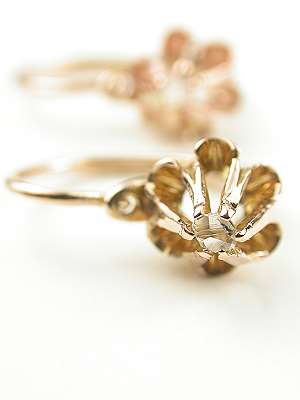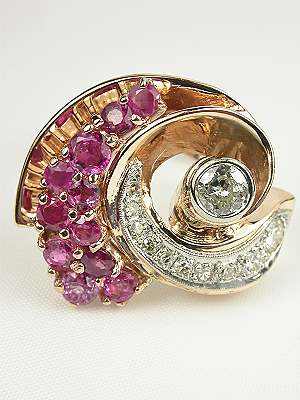FACET: The History of Rose Gold
April 24, 2015Among the various types of gold, rose gold is the most modern. It dates back just two centuries to 19th century Russia. The antique Victorian era, spanning the latter half of the 1800s and the early decades of the 1900s is when the popularity of rose gold began to spread throughout the world.
Rose gold gets its rosy or pink sheen from the copper that is mixed in with the gold. Copper, fast becoming an expensive metal in its own right but once a much more affordable material, was not alloyed to the gold to lessen the cost but rather to increase the strength and durability of the gold.
Jewelry designer Cartier is recognized as bringing rose gold into the spotlight with its Trinity band. This ring, made up of a trinity of, or three, interlinking bands, used white gold, yellow gold and rose gold to make each of the bands, which seem to defy gravity, stand out. The French writer and filmmaker Jean Cocteau furthered the rose gold trend by not only endorsing the Cartier Trinity ring but also wearing two, one stacked on top of the other, on his left pinkie.
As the Roaring 20s gave way to the 1930s Art Deco era, a brief halt was put on rose gold's ascent in popularity. The geometric shapes and monochromatic flavors of that jewelry period favored platinum and diamonds. Rose gold may have become just a romantic relic of the past if not for World War II. With platinum being earmarked as a strategic metal, one that was considered vital to war efforts, its use was restricted and in some cases outright prohibited. This unavailability led to the resurgence of gold jewelry beginning in the late 1930s, with all shades, including rose gold, reclaiming their number one metallic spot.
Return to blog home







 Facebook
Facebook Pinterest
Pinterest Instagram
Instagram